MTS Acumen User Manual
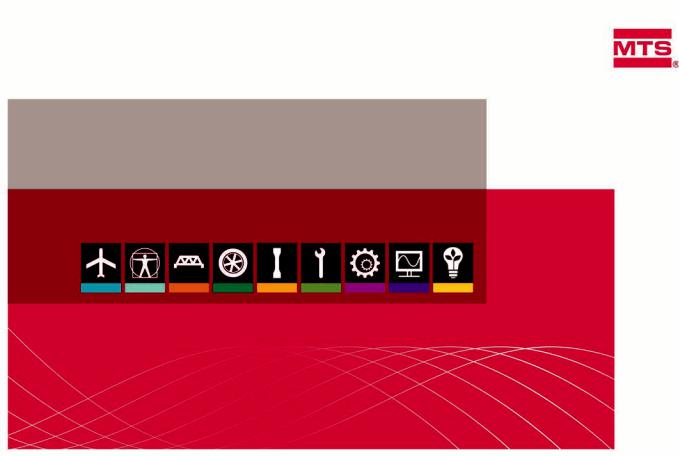
MTS Acumen™
Test System Operation
100-261-657 E |
be certain. |
© 2014 MTS Systems Corporation. All rights reserved.
Trademark Information
MTS, FlexTest, RPC, and TestWare are registered trademarks and MTS Acumen, MTS TestSuite, Station Builder, and Station Manager are trademarks of MTS Systems Corporation within the United States. These trademarks may be protected in other countries. All other trademarks are the property of their respective holders.
Proprietary Software
Software use and license is governed by the MTS End User License Agreement which defines all rights retained by MTS and granted to the End User. All Software is proprietary, confidential, and owned by MTS Systems Corporation and cannot be copied, reproduced, disassembled, decompiled, reverse engineered, or distributed without express written consent of MTS.
Software Verification and Validation
MTS software is developed using established quality practices in accordance with the requirements detailed in the ISO 9001 standards. Because MTS-authored software is delivered in binary format, it is not user accessible. This software will not change over time. Many releases are written to be backwards compatible, creating another form of verification. The status and validity of the MTS operating software is also checked during system verification and routine calibration of MTS hardware. These controlled calibration processes compare the final test results after statistical analysis against the predicted response of the calibration standards. With these established methods, MTS assures its customers that MTS products meet MTS’s exacting quality standards when initially installed and will continue to perform as intended over time.
Manual Part Number—Publication Date—Release
100-261-657 E — February 2014 — MTS TestSuite MP 2.6 or later / 793 Controller Software 5.6 or later 100-261-657 D — January 2013 — MTS TestSuite MP 2.5 or later / 793 Controller Software 5.6 or later
|
Table of Contents |
Table of Contents |
|
Preface |
|
Before You Begin............................................................................................................................. |
7 |
Documentation Conventions............................................................................................................ |
7 |
Technical Support |
|
How to Get Technical Support....................................................................................................... |
11 |
Before You Contact MTS............................................................................................................... |
11 |
If You Contact MTS by Phone........................................................................................................ |
13 |
Problem Submittal Form in MTS Manuals..................................................................................... |
14 |
Safety Overview |
|
Safety Considerations for MTS Acumen Systems......................................................................... |
16 |
Restrictions for Using MTS Series 793 Controller Software............................................... |
16 |
C-Stop (Controlled Stop) Interlock Action........................................................................... |
17 |
High-Power Prohibit Mode.................................................................................................. |
18 |
Emergency Stop Button...................................................................................................... |
19 |
Crush Zone......................................................................................................................... |
20 |
Safety Information Overview.......................................................................................................... |
22 |
Site Precautions............................................................................................................................. |
23 |
Personnel Qualifications................................................................................................................ |
24 |
System Hazard Zones................................................................................................................... |
24 |
Hazard Placard Placement............................................................................................................ |
24 |
Equipment Guards, Doors, and Covers......................................................................................... |
25 |
Test Area Enclosure....................................................................................................................... |
25 |
General Safety Practices............................................................................................................... |
26 |
Safety Practices Before Operating the System.............................................................................. |
27 |
Safety Practices While Operating the System .............................................................................. |
31 |
System Introduction |
|
About This Manual......................................................................................................................... |
34 |
System Overview........................................................................................................................... |
35 |
Load Frame Components................................................................................................... |
36 |
Frame-Mounted Control...................................................................................................... |
38 |
Fixtures............................................................................................................................... |
42 |
Load Cell............................................................................................................................. |
43 |
Main Power Switch (I/O)..................................................................................................... |
44 |
Parts of the Software Interface...................................................................................................... |
45 |
Main Window....................................................................................................................... |
45 |
3
Table of Contents |
|
Quick Access Toolbar.......................................................................................................... |
47 |
Control Panels..................................................................................................................... |
47 |
System Panel........................................................................................................... |
47 |
Status Panel............................................................................................................. |
49 |
Actuator Power Panel............................................................................................... |
53 |
Manual Control Panel............................................................................................... |
53 |
Program Control Panel............................................................................................. |
56 |
Test Run Status Panel.............................................................................................. |
56 |
Situational Awareness Panel.............................................................................................. |
58 |
Layer Control Panel.................................................................................................. |
66 |
Key Concepts |
|
About This Chapter........................................................................................................................ |
70 |
Using the E-Stop Control............................................................................................................... |
70 |
Understanding Your MTS Software............................................................................................... |
70 |
Understanding MTS Applications and File Types.......................................................................... |
72 |
Understanding the Control Loop.................................................................................................... |
75 |
Understanding Control Modes....................................................................................................... |
76 |
Understanding the Low Power Actuator State............................................................................... |
78 |
Understanding High-Power Prohibit............................................................................................... |
78 |
Positioning the Crosshead and Actuator for the Test..................................................................... |
79 |
Understanding Nested Limits......................................................................................................... |
80 |
Using Detectors and Actions to Protect Yourself and Your Equipment.......................................... |
85 |
Understanding Interlocks............................................................................................................... |
87 |
Understanding the Load Train....................................................................................................... |
90 |
Optimizing System Response Before Testing................................................................................ |
91 |
Understanding and Resolving Error Conditions............................................................................. |
93 |
MTS Echo Software....................................................................................................................... |
94 |
Running the Example Spring Test |
|
Example Spring Test Procedure.................................................................................................... |
96 |
Power Up the Station..................................................................................................................... |
96 |
Position the Crosshead and Actuator for Initial Setup................................................................... |
98 |
Install Fixturing............................................................................................................................. |
102 |
Set Limits..................................................................................................................................... |
107 |
Set Up Meters and the Scope...................................................................................................... |
113 |
Create a Compensation Set......................................................................................................... |
117 |
Install the Specimen..................................................................................................................... |
121 |
Tune the System for the Specimen.............................................................................................. |
124 |
Run the Test................................................................................................................................. |
131 |
Remove the Specimen................................................................................................................. |
138 |
4
Table of Contents
Best Practices for Other System Configurations and Tests |
|
Creating a Desktop Shortcut........................................................................................................ |
144 |
Pre-Test Station Checkup............................................................................................................ |
145 |
Setting Up the System................................................................................................................. |
150 |
Setup Tasks in the Explorer.............................................................................................. |
150 |
Install Fixturing.................................................................................................................. |
151 |
Setting Load Cell Location..................................................................................... |
151 |
Setting Signal Polarity............................................................................................ |
152 |
Balance Fixturing ................................................................................................... |
155 |
Setting Fixture Limits.............................................................................................. |
156 |
About Detector Actions........................................................................................... |
157 |
Compensate for Fixturing.................................................................................................. |
158 |
Compensate for Fixturing Procedures................................................................... |
159 |
Setting Specimen Limits.................................................................................................... |
163 |
Install Specimen................................................................................................................ |
165 |
Installing Specimen with Protection On.................................................................. |
166 |
Tune for Specimen............................................................................................................ |
168 |
Best Practices for Auto Tuning............................................................................... |
171 |
Tuning Procedures............................................................................................................ |
172 |
Using the selected tuning set as is......................................................................... |
172 |
Auto Tune - Generate Specimen Characteristics................................................... |
172 |
Auto Tune - Enter Specimen Characteristics......................................................... |
173 |
Verifying the Tuning Set......................................................................................... |
174 |
Adjust Tuning (Basic)............................................................................................. |
176 |
Adjust Tuning (Advanced)...................................................................................... |
177 |
Adjust Tuning (Expert)............................................................................................ |
178 |
Pretest Configuration........................................................................................................ |
178 |
Performing Setup for Additional Specimens..................................................................... |
178 |
Using Tools to Assist Setup............................................................................................... |
179 |
Generate Command............................................................................................... |
179 |
Manage Limits........................................................................................................ |
182 |
Using Stop Actions Within a Test...................................................................................... |
182 |
Common Hardware Tasks............................................................................................................ |
183 |
Mounting a Load Cell........................................................................................................ |
183 |
Mounting a Load Cell on the Actuator.................................................................... |
184 |
Mounting a Load Cell on the Table......................................................................... |
185 |
Mounting Optional Low Force Load Cells in Tandem Configuration...................... |
186 |
Installing Grips and Fixtures.............................................................................................. |
187 |
Common Software Tasks............................................................................................................. |
187 |
Creating a Desktop Shortcut That Includes a Controller................................................... |
187 |
Correcting Resource Validation Errors.............................................................................. |
188 |
5
Table of Contents |
|
Clearing Interlocks............................................................................................................ |
188 |
Applying Actuator Power................................................................................................... |
189 |
Editing Variables with the Express Editor.......................................................................... |
190 |
Generating a Report in MP............................................................................................... |
190 |
Generating a Report Using the Excel Reporter Add-In..................................................... |
191 |
Exporting a Test Run......................................................................................................... |
191 |
Selecting Report Templates.............................................................................................. |
191 |
Exporting Raw Data.......................................................................................................... |
192 |
Maintenance |
|
Routine Maintenance Overview Checklist................................................................................... |
194 |
General Cleaning ........................................................................................................................ |
196 |
Monthly Maintenance................................................................................................................... |
196 |
Other Service .............................................................................................................................. |
197 |
Decommissioning |
|
Decommissioning......................................................................................................................... |
200 |
6

Preface
Before You Begin
Safety first!
Before you use your MTS product or system, read and understand the safety information provided with your system. Improper installation, operation, or maintenance can result in hazardous conditions that can cause severe personal injury or death, or damage to your equipment and specimen. Again, read and understand the safety information provided with your system before you continue. It is very important that you remain aware of hazards that apply to your system.
Other MTS manuals
In addition to this manual, you may receive additional manuals in paper or electronic form.
You may also receive an MTS System Documentation CD. It contains an electronic copy of the manuals that pertain to your test system.
Controller and application software manuals are typically included on the software CD distribution disc(s).
Documentation Conventions
The following paragraphs describe some of the conventions that are used in your MTS manuals.
Hazard conventions
Hazard notices may be embedded in this manual. These notices contain safety information that is specific to the activity to be performed. Hazard notices immediately precede the step or procedure that may lead to an associated hazard. Read all hazard notices carefully and follow all directions and recommendations. Three different levels of hazard notices may appear in your manuals. Following are examples of all three levels. (for general safety information, see the safety information provided with your system.)
Danger:
Danger notices indicate the presence of a hazard with a high level of risk which, if ignored, will result in death, severe personal injury, or substantial property damage.
MTS Acumen™ | 7
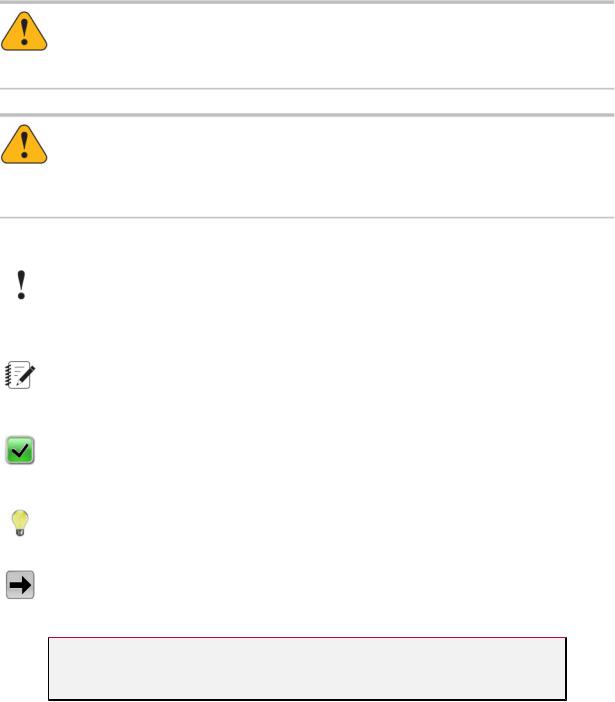
Preface
Warning:
Warning notices indicate the presence of a hazard with a medium level of risk which, if ignored, can result in death, severe personal injury, or substantial property damage.
Caution:
Caution notices indicate the presence of a hazard with a low level of risk which, if ignored, could cause moderate or minor personal injury or equipment damage, or could endanger test integrity.
Other special text conventions
Important:
Important notices provide information about your system that is essential to its proper function. While not safety-related, if the important information is ignored, test results may not be reliable, or your system may not operate properly.
Note:
Notes provide additional information about operating your system or highlight easily overlooked information.
Recommended:
Recommended notes provide a suggested way to accomplish a task based on what MTS has found to be most effective.
Tip:
Tips provide helpful information or a hint about how to most efficiently accomplish a task.
Access:
Access provides the route you should follow to a referenced item in the software.
Examples show specific scenarios relating to your product and appear with a shaded background.
Special terms
The first occurrence of special terms is shown in italics.
Illustrations
Illustrations appear in this manual to clarify text. They are examples only and do not necessarily represent your actual system configuration, test application, or software.
8 | MTS Acumen™
Preface
Electronic manual conventions
This manual is available as an electronic document in the Portable Document File (PDF) format. It can be viewed on any computer that has Adobe Acrobat Reader installed.
Hypertext links
The electronic document has many hypertext links displayed in a blue font. All blue words in the body text, along with all contents entries and index page numbers, are hypertext links. When you click a hypertext link, the application jumps to the corresponding topic.
MTS Acumen™ | 9

Technical Support
How to Get Technical Support
Start with your manuals
The manuals supplied by MTS provide most of the information you need to use and maintain your equipment. If your equipment includes software, look for online help and README files that contain additional product information.
Technical support methods
MTS provides a full range of support services after your system is installed. If you have any questions about a system or product, contact Technical Support in one of the following ways.
Web site |
www.mts.com > Contact Us (upper-right corner) > In the Subject field, choose |
|
To escalate a problem; Problem Submittal Form |
Worldwide: tech.support@mts.com |
|
|
Europe: techsupport.europe@mts.com |
Telephone |
Worldwide: 1 800 328 2255 - toll free in U.S.; +1 952 937 4000 - outside U.S. |
|
Europe: +800 81002 222, International toll free in Europe |
Outside the U.S.
For technical support outside the United States, contact your local sales and service office. For a list of worldwide sales and service locations and contact information, use the Global MTS link at the MTS web site:
www.mts.com > Global Presence > Choose a Region
Before You Contact MTS
MTS can help you more efficiently if you have the following information available when you contact us for support.
Know your site number and system number
The site number contains your company number and identifies your equipment type (such as material testing or simulation). The number is typically written on a label on your equipment before the system leaves MTS. If you do not know your MTS site number, contact your sales engineer.
Example site number: 571167
MTS Acumen™ | 11
Technical Support
When you have more than one MTS system, the system job number identifies your system. You can find your job number in your order paperwork.
Example system number: US1.42460
Know information from prior technical assistance
If you have contacted MTS about this problem before, we can recall your file based on the:
•MTS case number
•Name of the person who helped you
Identify the problem
Describe the problem and know the answers to the following questions:
•How long and how often has the problem occurred?
•Can you reproduce the problem?
•Were any hardware or software changes made to the system before the problem started?
•What are the equipment model numbers?
•What is the controller model (if applicable)?
•What is the system configuration?
Know relevant computer information
For a computer problem, have the following information available:
•Manufacturer’s name and model number
•Operating software type and service patch information
•Amount of system memory
•Amount of free space on the hard drive where the application resides
•Current status of hard-drive fragmentation
•Connection status to a corporate network
Know relevant software information
For software application problems, have the following information available:
•The software application’s name, version number, build number, and (if available) software patch number. This information can typically be found in the About selection in the Help menu.
•The names of other applications on your computer, such as:
—Anti-virus software
—Screen savers
—Keyboard enhancers
—Print spoolers
12 | MTS Acumen™

Technical Support
— Messaging applications
If You Contact MTS by Phone
A Call Center agent registers your call before connecting you with a technical support specialist. The agent asks you for your:
•Site number
•Email address
•Name
•Company name
•Company address
•Phone number where you can be reached
If your issue has a case number, please provide that number. A new issue will be assigned a unique case number.
Identify system type
To enable the Call Center agent to connect you with the most qualified technical support specialist available, identify your system as one of the following types:
•Electrodynamic material test system
•Electromechanical material test system
•Hydromechanical material test system
•Vehicle test system
•Vehicle component test system
•Aero test system
Be prepared to troubleshoot
Prepare to perform troubleshooting while on the phone:
•Call from a telephone close to the system so that you can implement suggestions made over the phone.
•Have the original operating and application software media available.
•If you are not familiar with all aspects of the equipment operation, have an experienced user nearby to assist you.
Write down relevant information
In case Technical Support must call you:
•Verify the case number.
MTS Acumen™ | 13

Technical Support
•Record the name of the person who helped you.
•Write down any specific instructions.
After you call
MTS logs and tracks all calls to ensure that you receive assistance for your problem or request. If you have questions about the status of your problem or have additional information to report, please contact Technical Support again and provide your original case number.
Problem Submittal Form in MTS Manuals
Use the Problem Submittal Form to communicate problems with your software, hardware, manuals, or service that are not resolved to your satisfaction through the technical support process. The form includes check boxes that allow you to indicate the urgency of your problem and your expectation of an acceptable response time. We guarantee a timely response—your feedback is important to us.
You can access the Problem Submittal Form at www.mts.com > Contact Us (upper-right corner) > In the
Subject field, choose To escalate a problem; Problem Submittal Form
14 | MTS Acumen™

Safety Overview
Topics: |
|
|
• Safety Considerations for MTS Acumen Systems............................................................................ |
16 |
|
• |
Safety Information Overview............................................................................................................. |
22 |
• |
Site Precautions................................................................................................................................ |
23 |
• |
Personnel Qualifications.................................................................................................................... |
24 |
• |
System Hazard Zones....................................................................................................................... |
24 |
• |
Hazard Placard Placement................................................................................................................ |
24 |
• Equipment Guards, Doors, and Covers............................................................................................ |
25 |
|
• |
Test Area Enclosure.......................................................................................................................... |
25 |
• |
General Safety Practices................................................................................................................... |
26 |
• Safety Practices Before Operating the System................................................................................. |
27 |
|
• Safety Practices While Operating the System .................................................................................. |
31 |
|
MTS Acumen™ | 15
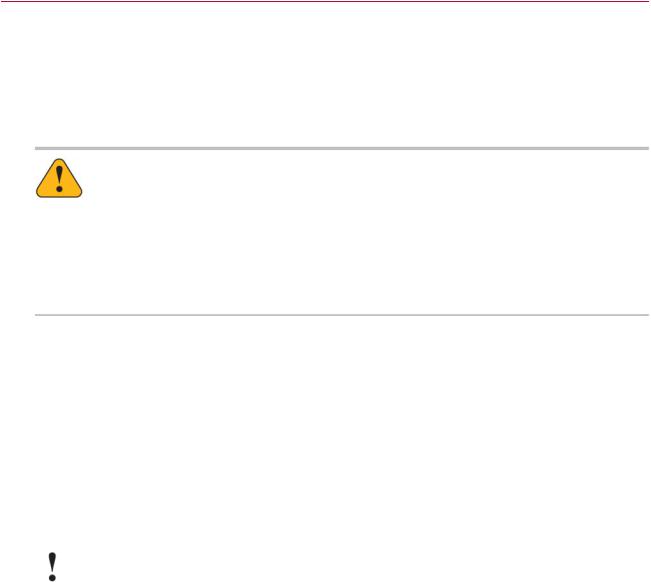
Safety Overview
SafetyConsiderationsforMTSAcumenSystems
Restrictions for Using MTS Series 793 Controller Software
Using MTS Series 793 Controller Software with MTS Acumen Systems
Warning:
Improper changes to the station configuration file can result in sudden and unexpected actuator motion.
Unexpected actuator motion can damage equipment and injure personnel.
Ensure the station configuration settings remain as set at the factory before operating the system. Do not use MTS Series 793 Controller software to change the original factory settings of the supplied station configuration file (.cfg) unless you are an advanced user.
Your MTS Acumen system is equipped with an MTS Series 793 Controller, which includes:
•MTS FlexTest Series 40/60 Controller
•Model 793.00 System Software bundle
The System Software bundle contains applications that perform activities centered around maintaining servo control of the test station, and includes the following:
•Project Manager
•Station Builder
•Station Manager
•Basic TestWare
•Station Desktop Organizer
•hwi File Editor
Important:
With the exception of opening station configuration files with the Station Manager application, all other functionality of the System Software bundle is intended only for on-site MTS personnel and advanced users. For typical use, all limit adjustment, tuning, compensation setup, and so on, should be performed using only MTS TestSuite MP for MTS Acumen.
Using Station Manager to open station configurations
Before you begin to use the MTS TestSuite MP application to create or run a test on your MTS Acumen system, you must open a station configuration file. The station configuration file defines the controller resources (such as channels, inputs, DIO, and so on) with which you perform tests. Unless you configure your software to open a station configuration automatically when you launch MTS TestSuite software, you must use the the Station Manager application to open the station configuration.
16 | MTS Acumen™
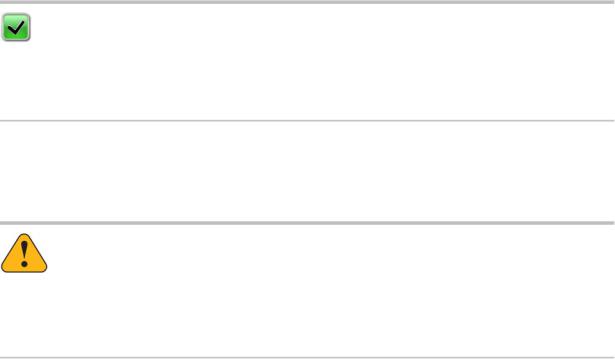
Safety Overview
Recommended:
After you open your station configuration file with the Station Manager application, MTS recommends that you minimize the Station Manager window for the remainder of the session. Be aware that the Station Manager application hosts the station configuration and performs real-time control. Do not exit the Station Manager application while using your system.
For information about configuring your system to open station configuration files with launching the Station Manager application, see Creating a Desktop Shortcut That Includes a Controller (p. 187).
Restriction for Changing the Axial Acceleration Limit
Warning:
Changing the factory settings of the Axial Acceleration Limit can result in sudden and unexpected actuator motion.
A moving actuator can injure anyone in its path or cause damage to fixtures and specimens.
Ensure Axial Limit settings remain as set at the factory before operating the system.
The supplied station configuration file (.cfg) has an Axial Acceleration Limit set at the factory as follows and must not be changed:
•Upper Limit: 5.000 g
•Upper Action: C-Stop Interlock
•Lower Limit: -5.000 g
•Lower Action: C-Stop Interlock
C-Stop (Controlled Stop) Interlock Action
The C-Stop Interlock is an action you can assign to specimen and fixture limit detectors during system setup.
For example, when you right-click the thumb control used to adjust limits in the Set Up node, a context menu appears with C-Stop Interlock in the Actions list, along with other options, such as Interlock, Indicate, and so on.
You can also assign the C-Stop Interlock action to limit detection activities when designing a test.
C-Stop Interlock Configuration
The C-Stop Interlock action is configured to Hold At Level in the Stable Displacement control mode with the Zero the Output option enabled.
MTS Acumen™ | 17

Safety Overview
Important:
The C-Stop Interlock action configuration is set with MTS controller software and should not be changed for typical operations. For information about changing the C-Stop Interlock action configuration, contact MTS.
C-Stop Action Versus Interlock Action
The primary benefit of the C-Stop Interlock action is that when it is triggered, the controller performs a control mode switch to stable displacement and the actuator is held in place. The C-Stop Interlock action does not remove power from the actuator.
The C-Stop Interlock action is appropriate for instances in which limiting actuator movement after the action is triggered is the primary objective.
In contrast, when an Interlock action is triggered, the controller removes power from the actuator, which allows the actuator to continue to fall until the mechanical brake engages. This may result in actuator movement greater than 30 mm (1.2 in.) between the time the detector limit is triggered and when the mechanical brake engages.
The Interlock action is appropriate for instances in which removing actuator power, regardless of incidental actuator movement, is the primary objective.
Recommended:
It is important to understand how detector actions affect system operation. In most cases, MTS recommends using the C-Stop Interlock action for detectors during system setup and test design for MTS Acumen systems.
Resetting a C-Stop Interlock action
Once a C-Stop Interlock action is triggered, you must click Interlock Reset before you can switch out of stable displacement, use Manual Command controls, or resume or run a test.
High-Power Prohibit Mode
High-Power Prohibit mode limits maximum actuator speed to 10 mm/sec or less. This mode is applied when you press the High-Power Prohibit button on the frame-mounted control, or if the door is open on the optional test area enclosure.
It is recommended that the system be in High-Power Prohibit mode for fixture or specimen loading. In this mode, if the machine detects a system fault where 10mm/sec may be exceeded, it will remove power from the actuator. When this occurs, gravity may cause the actuator to drop causing specimen damage before the brake is applied.
18 | MTS Acumen™
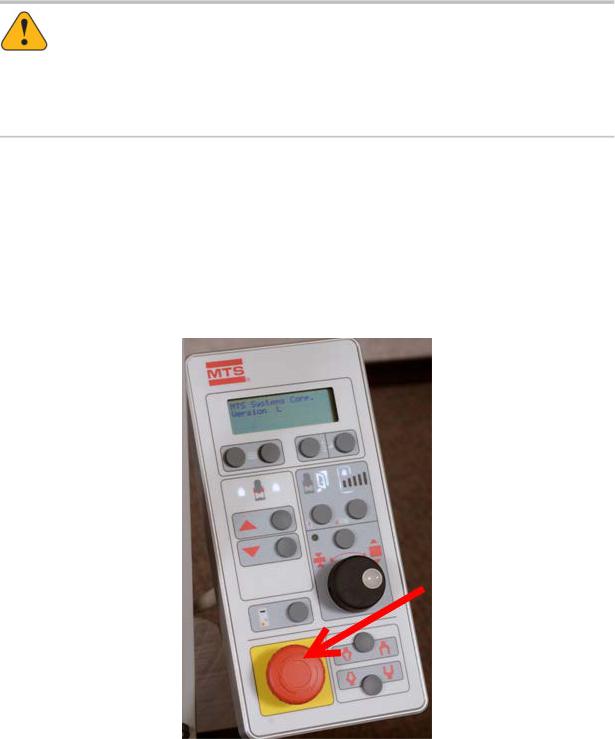
Safety Overview
Warning:
Actuators can produce dangerous forces.
A moving actuator can injure anyone in its path.
Always ensure that the system is in High-Power Prohibit mode when installing fixtures or specimens.
Emergency Stop Button
The frame-mounted control is equipped with an Emergency Stop button to be used for emergency purposes only. There is also an optional Remote Emergency Stop button. The Emergency Stop buttons will shut off power to the main actuator and crosshead lift system. To release an activated button, turn it clockwise.
The Emergency Stop button should be periodically tested by pressing it when the controller is powered on, but not when a test is running. The controller continuously monitors the redundant Emergency Stop chain and will generate an interlock alerting the user if any problems are detected. Pressing the Emergency Stop button allows the active state to be checked.
Frame-Mounted Control Emergency Stop Button
MTS Acumen™ | 19
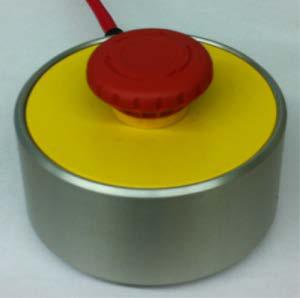
Safety Overview
Optional Remote Emergency Stop Button
Crush Zone
A crush zone exists between the T-slot base and crosshead which is highlighted in red in the following figure. Keep clear of this area when the actuator is in motion. Press the Emergency Stop button on the frame-mounted control to shut off power to the motor and stop actuator motion.
20 | MTS Acumen™
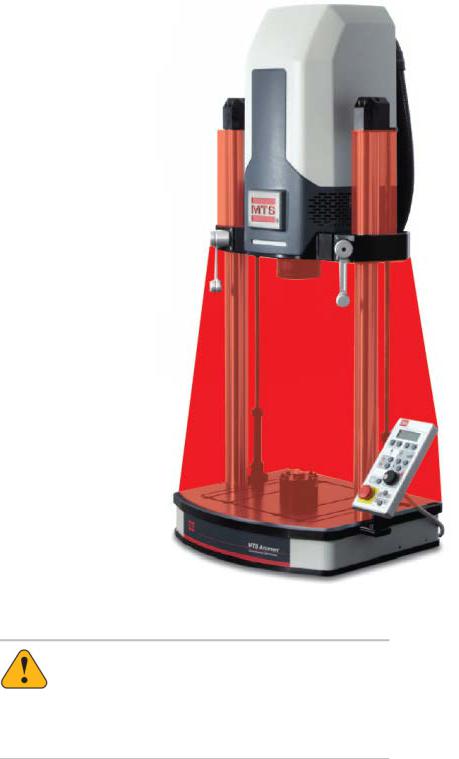
Safety Overview
Crush Zone of an MTS Acumen System
Warning:
Applying power can result in sudden actuator motion.
A moving actuator can injure anyone in its path.
Always clear the actuator area before applying power.
MTS Acumen™ | 21

Safety Overview
Safety Information Overview
MTS systems are designed to generate single-axis or multi-axial motions and forces simultaneously in a controlled environment and impart these motions and forces into a specimen that is secured to the system.
When you prepare to operate the system and during system operation, ensure the following:
•Do not use or allow personnel to operate the system who are not experienced, trained, or educated in the inherent dangers associated with this system and who are not experienced, trained, or educated with regard to the intended operation as it applies to this system.
•Do not disable safety components or features (including limit detectors, light curtains, or proximity switches/detectors).
•Do not attempt to operate the system without appropriate personal safety gear (for example, hearing, head, hand, and eye protection).
•Do not apply energy levels that exceed the maximum energies and velocities for the system design. For these maximum values, see the system specifications.
•Do not use a specimen that does not meet the minimum (if applicable) or exceeds the maximum allowable mass. For these values, see the system specifications.
•Do not use specimens that are combustible, flammable, pressurized, or explosive.
•Do not use humans as specimens or allow humans to ride in or on the specimen or the system for any purpose unless the system is man-rated and all associated safety conditions are strictly enforced.
•Do not modify the system or replace system components using parts that are not MTS component parts.
•Do not effect repairs using parts or components that are not manufactured to MTS specifications.
•Do not operate the system in an explosive atmosphere.
•Do not use the system in an area where uncontrolled access to the system is allowed when the system is in operation.
22 | MTS Acumen™
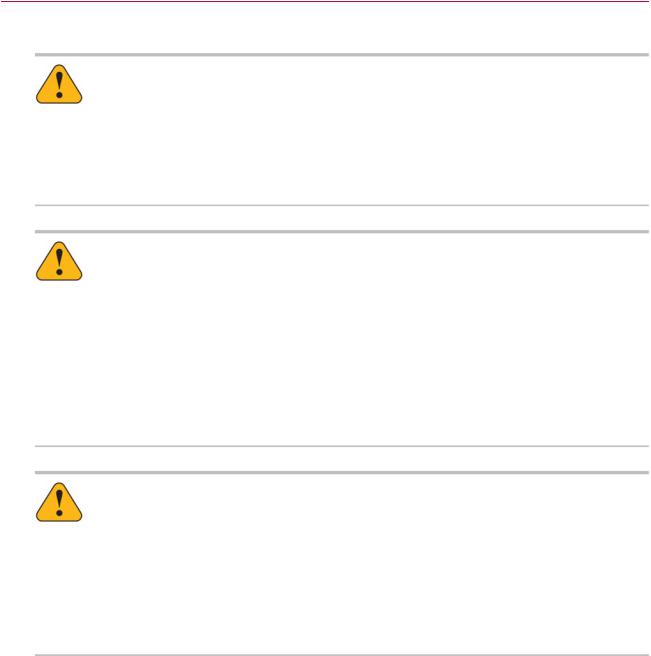
Safety Overview
Site Precautions
Warning:
The equipment is designed to operate in an environment where precautions have to be taken to minimize hazards to personnel and the equipment
Ignoring hazards and failing to take necessary precautions can result in injury or death to personnel, and damage to equipment.
Do not install or operate the system equipment in a hazardous environment.
Warning:
Hazardous situations or conditions can arise suddenly and without warning at all parts of the system.
If immediate action is not taken to remove the hazard or remove personnel from the hazard, serious injury or death can result.
Do not operate the system unless you have full view of the equipment. If operation of the system takes place in a remote control room (separated from the equipment), it should be designed so that the operator has full and unobstructed view of the system equipment. Make sure that ergonomic issues are considered in the layout of the operating area to limit operator stress and fatigue.
Warning:
Working environments that are not designed with appropriate ventilation, lighting, heating and cooling or non-ergonomic equipment, furniture, and equipment/furniture placements can result in operator fatigue and stress.
Operator fatigue and stress can result in operator errors, which can result in injury to personnel or damage to the equipment and/or specimen.
Make sure that lighting, heating, cooling, and ergonomic issues are considered in the layout of the operating area to limit operator stress and fatigue.
MTS Acumen™ | 23
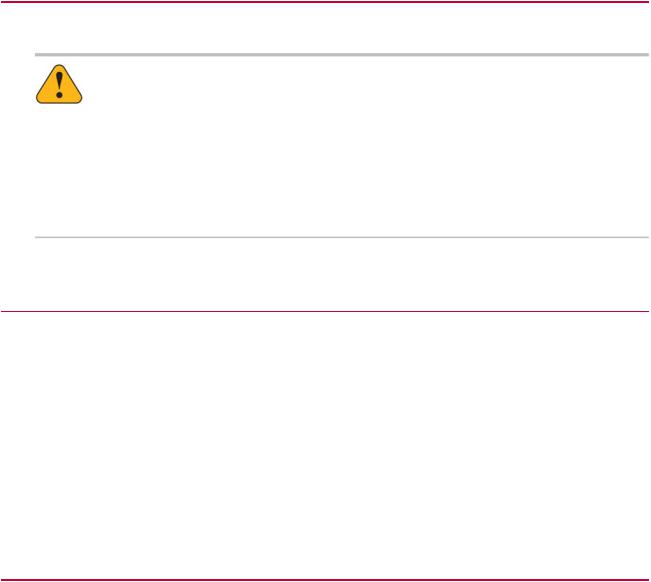
Safety Overview
Personnel Qualifications
Caution:
System installation, maintenance, setup, and operation require specialized training.
Installation, maintenance, setup, and operation of the system by unqualified personnel can expose them, and others, to hazards that can cause death or personal injury and damage to equipment.
Do not allow unqualified personnel to perform any of the system installation, maintenance, setup, or operating procedures. Installation, maintenance, setup, and operating procedures should only be performed by trained personnel.
System Hazard Zones
The area around and including the system is considered hazardous. Generally, hazards result from motions that occur during system operation. However, there are latent pressure, overturning, and settling/unexpected movement hazards that can occur prior to or after system operation, during specimen installation, or during maintenance and repair.
The hazard zone includes the entire system and an additional area of at least 2 m (6 feet) around the system perimeter.
Whenever personnel enter this defined zone they should be outfitted with adequate and appropriate safety attire including hearing protection, safety glasses, hard hat, and safety shoes. Never wear loose fitting clothing when in the system area. Never enter the system area when power is on.
Hazard Placard Placement
Hazard placards contain specific safety information and are affixed directly to the system so they are plainly visible.
Each placard describes a system-related hazard. When possible, international symbols (icons) are used to graphically indicate the type of hazard and the placard label indicates its severity. In some instances, the placard may contain text that describes the hazard, the potential result if the hazard is ignored, and general instructions about how to avoid the hazard.
24 | MTS Acumen™
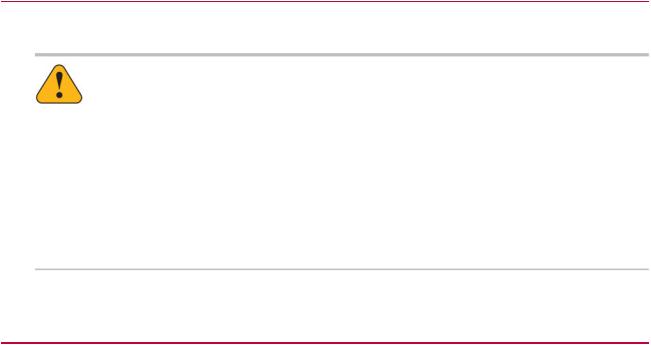
Safety Overview
Equipment Guards, Doors, and Covers
Warning:
Guards, doors, and covers are designed to protect personnel from moving parts, electrical shock, and pressurized fluid or gas.
If guards, doors, and covers are not installed, potential hazards are exposed that can cause injury or death. Personnel can be struck, crushed, entangled, or drawn into moving parts; hit by flying objects launched with concussive force by the rapid expansion of pressurized gas; sprayed from pressurized fluid that can burn and pierce; and electrocuted by exposed electrical conductors.
Install and close all guards, doors, and covers before applying electrical power and operating the system.
Test Area Enclosure
MTS Recommends Use of a Test Area Enclosure
MTS recommends that the Load Unit be equipped with an integral Test Area Enclosure that provides protection against hazards and containment of ejected non-projectile specimen material. The Test Area Enclosure also enhances the security and integrity of tests by providing a barrier to unintended specimen contact by operators and observers in addition to protecting personnel from hazards generated by moving parts. MTS offers a Test Area Enclosure for each type of Load Unit.
The customer may elect to not have MTS supply the Test Area Enclosure. When customers decline the MTS Test Area Enclosure, it is then the responsibility of the customer or systems integrator to safeguard the personnel in the work area against ejected parts or materials from test specimens and to control access to the machinery.
Additional Protection May Be Necessary
Customers or end users must evaluate risks due to ejected parts or materials from the test specimens. Because of the wide range of applications which MTS Products are used, and over which MTS has no control, additional protective devices may be necessary. It is MTS’ strong recommendation that the customer or end user carry out their own product safety risk assessments to determine if additional safety devices such as protective shielding, warning signs, and/or methods of restricting access to the product are required.
MTS Acumen™ | 25
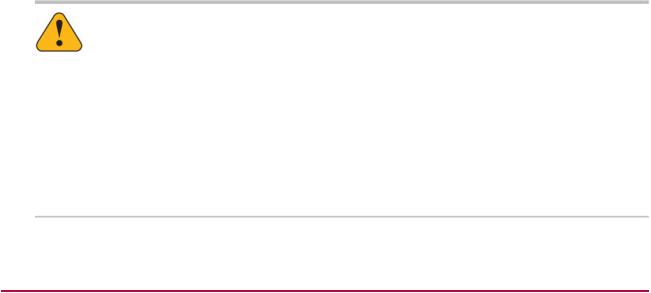
Safety Overview
Warning:
Guards, doors, and covers are designed to protect personnel from moving parts, electrical shock, and pressurized fluid or gas.
If guards, doors, and covers are not installed, potential hazards are exposed that can cause injury or death. Personnel can be struck, crushed, entangled, or drawn into moving parts; hit by flying objects launched with concussive force by the rapid expansion of pressurized gas; sprayed from pressurized fluid that can burn and pierce; and electrocuted by exposed electrical conductors.
Install and close all guards, doors, and covers before applying electrical power and operating the system.
General Safety Practices
If you have system related responsibilities (that is, if you are an operator, service engineer, or maintenance person), you should study this manual carefully before you attempt to perform any test system procedure.
You should receive training on this system or a similar system to ensure a thorough knowledge of your equipment and the safety issues that are associated with its use. In addition, you should gain an understanding of system functions by studying the other manuals supplied with your test system. Contact MTS for information about the content and dates of training classes that are offered.
It is very important that you study the following safety information to ensure that your facility procedures and the system’s operating environment do not contribute to or result in a hazardous situation. Remember, you cannot eliminate all the hazards associated with this system, so you must learn and remain aware of the hazards that apply to your system at all times. Use these safety guidelines to help learn and identify hazards so that you can establish appropriate training and operating procedures and acquire appropriate safety equipment (such as gloves, goggles, and hearing protection).
Each test system operates within a unique environment which includes the following known variables:
•Facility variables (facility variables include the structure, atmosphere, and utilities)
•Unauthorized customer modifications to the equipment
•Operator experience and specialization
•Test specimens
Because of these variables (and the possibility of others), your system can operate under unforeseen circumstances that can result in an operating environment with unknown hazards.
Improper installation, operation, or maintenance of your system can result in hazardous conditions that can cause death, personal injury, or damage to the equipment or to the specimen. Common sense and a thorough knowledge of the system’s operating capabilities can help to determine an appropriate and safe approach to its operation.
Observe the prescribed safety practices before and during system operation.
It is the user’s responsibility to take the machine out of service and contact MTS Service if discrepancies in system operation are found.
26 | MTS Acumen™

Safety Overview
Safety Practices Before Operating the System
Before you apply power to the test system, review and complete all of the safety practices that are applicable to your system. The goal, by doing this, is to improve the safety awareness of all personnel involved with the system and to maintain, through visual inspections, the integrity of specific system components.
Read all manuals
Study the contents of this manual and the other manuals provided with your system before attempting to perform any system function for the first time. Procedures that seem relatively simple or intuitively obvious can require a complete understanding of system operation to avoid unsafe or dangerous situations.
Locate lockout/tagout points
Know where the lockout/tagout point is for each of the supply energies associated with your system. This includes the hydraulic, pneumatic, electric, and water supplies (as appropriate) for your system to ensure that the system is isolated from these energies when required.
Know facility safe procedures
Most facilities have internal procedures and rules regarding safe practices within the facility. Be aware of these safe practices and incorporate them into your daily operation of the system.
Locate Emergency Stop buttons
Know the location of all the system Emergency Stop buttons so that you can stop the system quickly in an emergency. Ensure that an Emergency Stop button is located within close proximity of the operator at all times.
Know controls
Before you operate the system for the first time, make a trial run through the operating procedures with the power off. Locate all hardware and software controls and know what their functions are and what adjustments they require. If any control function or operating adjustment is not clear, review the applicable information until you understand it thoroughly.
Have first aid available
Accidents can happen even when you are careful. Arrange your operator schedules so that a properly trained person is always close by to render first aid. In addition, ensure that local emergency contact information is posted clearly and in sight of the system operator.
Know potential crush and pinch points
Be aware of potential crush and pinch points on your system and keep personnel and equipment clear of these areas.
An important consideration for servohydraulic systems is that when power is interrupted, it is likely that stored accumulator pressure will persist for some time within the system. In addition, it is likely that as stored energy dissipates, gravity will cause portions of the system to move.
MTS Acumen™ | 27
Safety Overview
Be aware of component movement with hydraulics off
For hydraulic systems, be aware that mechanical assemblies can shift or drift due to changes within hydraulic hardware when hydraulics are turned off. This non-commanded movement is because oil can transfer between the pressure and return ports and across internal components of the hydraulic hardware. Be aware that this can happen and clear the area around the mechanical assemblies when hydraulics are turned off.
Know electrical hazards
When the system electrical power is turned on, minimize the potential for electrical shock hazards. Wear clothing and use tools that are properly insulated for electrical work. Avoid contact with exposed wiring or switch contacts.
Whenever possible, turn off electrical power when you work on or in proximity to any electrical system component. Observe the same precautions as those given for any other high-voltage machinery.
Make sure that all electrical components are adequately grounded. Grounds must remain connected and undisturbed at all times.
Ensure correct cable connection
If a system cable has been disconnected, ensure that you establish the correct cable-to-connector relationship during reconnection. Incorrect cable connections can result in improper servo loop phasing or an open servo loop condition, either of which can cause unstable or unexpected and potentially dangerous system motions. Verify the correct cable-to-connector relationship by observing the cable and connector labeling and the system wiring schematics.
Keep bystanders safely away
Keep bystanders at a safe distance from all equipment. Never allow bystanders to be in close proximity of specimens or equipment while the test is running.
Wear proper clothing
Do not wear neckties, shop aprons, loose clothing or jewelry, or long hair that could get caught in equipment and result in an injury. Remove loose clothing or jewelry and restrain long hair.
Remove flammable fluids
Remove flammable fluids from their containers or from components before you install the container or component. If desired, you can replace the flammable fluid with a non-flammable fluid to maintain the proper proportion of weight and balance.
Know compressed gas hazards
Your system may contain accumulators that require a high-pressure gas precharge (pressures that exceed 138 bar [2000 psi]). High-pressure devices are potentially dangerous because a great amount of energy is available in the event of an uncontrolled expansion or rupture.
Observe the following safety practices when you work with high-pressure air or gases:
•When you charge an accumulator, follow all the charging instructions provided in the appropriate product information manuals. When precharging accumulators, properly identify the type of gas to be used and the type of accumulator to be precharged.
•Use only dry-pumped nitrogen to precharge nitrogen-charged accumulators. (Dry-pumped nitrogen can also be labeled “oil pumped” or “dry water pumped.”) Do not use compressed air or oxygen for
28 | MTS Acumen™
Safety Overview
precharging: the temperature increase caused by rapid gas compression can result in highly explosive conditions when hydraulic fluid is in the presence of oxygen or compressed air.
•Always follow the recommended bleeding procedures before you remove or disassemble components that contain pressurized gas. When you bleed a gas or remove a fitting, hose, or component that contains a gas, remember that many gases cannot support life. Therefore, as the ratio of released gas to oxygen increases, so does the potential for suffocation.
•Wear appropriate safety devices to protect your hearing. Escaping air or gas can create a noise level that can damage your hearing.
•Ensure that all pressurized air or gas is bled out of a pneumatic or gas-charged device before you start to disassemble it. A thorough understanding of the assembly and its pressurized areas is necessary before you undertake any maintenance. Refer to the appropriate product information for the correct bleeding procedure.
It may not be obvious or intuitive which bolts or fittings are used to restrain a pressurized area. On some assemblies, you must remove a cover plate to gain access to the structural bolts. Sometimes, to protect you from a rapid release of trapped gases, a small port is exposed when you remove this cover plate. Exposing this port ensures that the gas precharge is fully bled before disassembly. However, this is not the recommended procedure for bleeding a pneumatic or gas-charged device, because it can expose you to the dangers of escaping compressed gas and particulates that are expelled from the chamber or around the seals. Do not assume that cover plates and ports are installed in all the critical locations.
Consult MTS when in doubt about the safety or reliability of any system-related procedure or modification that involves devices that contain any type of compressed gas.
Check bolt ratings and torques
To ensure a reliable product, fasteners (such as bolts and tie rods) used in MTS-manufactured systems are torqued to specific requirements. If a fastener is loosened or the configuration of a component within the system is modified, refer to the system and component assembly drawings (located on the System Documentation CD) to determine the correct fastener, fastener rating, and torque. Over torquing or under torquing a fastener can create a hazardous situation due to the high forces and pressures present in MTS test systems.
On rare occasions, a fastener can fail even when it is correctly installed. Failure usually occurs during torquing, but it can occur several days later. Failure of a fastener can result in a high velocity projectile. Therefore, it is a good practice to avoid stationing personnel in line with or below assemblies that contain large or long fasteners.
Practice good housekeeping
Keep the floors in the work area clean. Industrial chemicals, such as hydraulic fluid, that are spilled on any type of floor can result in a dangerous, slippery surface. Do not leave tools, fixtures, or other items not specific to the test, lying about on the floor, system, or decking.
Protect hoses and cables
Protect electrical cables from spilled fluids and from excessive temperatures that can cause the cables to harden and eventually fail. Ensure that all cables have appropriate strain relief devices installed at the cable and near the connector plug. Do not use the connector plug as a strain relief.
Protect all system hoses and cables from sharp or abrasive objects that can cause the hose or cable to fail. Use a cable cover or cable tray where cables are in traffic locations. Never walk on hoses or cables
MTS Acumen™ | 29
Safety Overview
or move heavy objects over them. Route hoses and cables away from areas that expose them to possible damage.
Provide proper hydraulic fluid filtration
For hydraulic systems equipped with a non-MTS hydraulic power unit, make sure that hydraulic fluid filtration is established to maintain fluid cleanliness standards as stated in the Hydraulic Fluid Care Manual (see the System Documentation CD). Particles present in the hydraulic fluid can cause erratic or poor system response.
Protect accumulators from moving objects
For systems equipped with accumulators, protect accumulators with supports or guards. Do not strike accumulators with moving objects. This could cause the accumulator(s) to separate from the manifold resulting in equipment damage and personal injury.
Record changes
If you change any operating procedure, write the change and the date of the change in the appropriate manual.
Provide test area guards
Use protective guards such as cages, enclosures, and special laboratory layouts when you work with hazardous test specimens (for example, brittle or fragmenting materials or materials that are internally pressurized).
Do not exceed the Maximum Supply Pressure
For hydraulic systems and components, make sure that hydraulic supply pressure is limited to the maximum pressure defined by the system operating limits. Read and review “System Operating Limits” for the system.
Do not disable safety devices
Your system may have active or passive safety devices installed to prevent system operation if the device indicates an unsafe condition. Do not disable such devices as it may result in unexpected system motion.
Use appropriately sized fuses
Whenever you replace fuses for the system or supply, ensure that you use a fuse that is appropriately sized and correctly installed. Undersized or oversized fuses can result in cables that overheat and fuses that explode. Either instance creates a fire hazard.
Provide adequate lighting
Ensure adequate lighting to minimize the chance of operation errors, equipment damage, and personal injury.
Provide adequate ventilation
Make sure work and maintenance areas are adequately ventilated to minimize the risks associated with the collection of hazardous fumes (such as vaporized hydraulic fluid). This is of special concern in confined areas where hydraulic equipment is operating at high pressure in confined areas.
30 | MTS Acumen™
